As the subscription model becomes more and more important to the publisher’s business model, more and more content is moving behind a paywall.
The ultimate goal of this model is to turn recurring visitors into recurring customers.
But it’s easier said than done, in 2018, only 16% of Americans said they were willing to pay for any online news. In order to encourage more consumers to pay for content, publishers have built a variety of paywall types to convert their readers.
I’ve recently taken a deep dive into subscriptions and explored how publishers should be treating different audiences.
Specifically how it’s possible to convert those audiences is a different topic altogether, and that’s what I’ll be diving into here.
The Advertiser's Launch List for Landing Pages that Convert
Strategy #1: Tiers of Access
Having different tiers of access means that different users see different things depending on how often they visit your site or the type of content they’re looking to access.
By creating different tiers, or levels of access for users, you create an opportunity to demonstrate the value of your content before you ask them to pay for it.
Complimentary Access
Just last year, Hearst announced that they were shifting to a dynamic paywall. I clicked around on the Women’s Health website for about 10 minutes, read seven articles, and didn’t see a single paywall.
That’s because I’m not an avid Women’s Health reader—this is part of their strategy. They choose to allow me to explore as much content as I want the first time I visit to demonstrate their value before prompting me to subscribe when I revisit later.
When I did, I was prompted to subscribe:
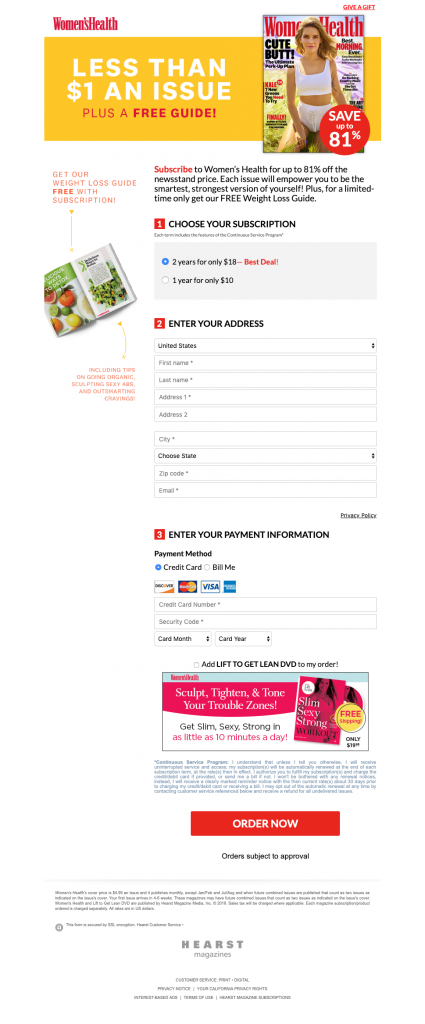
Hearst provided me with complimentary access (first tier) to content when I first arrived, but wanted me to subscribe (second tied) after a certain amount of exposure.
Charged, one of my favorite technology news roundups, provides complimentary access in a different way. Owen Williams provides Charged, a weekly newsletter that is free, but offers a second tier of content to those who subscribe:
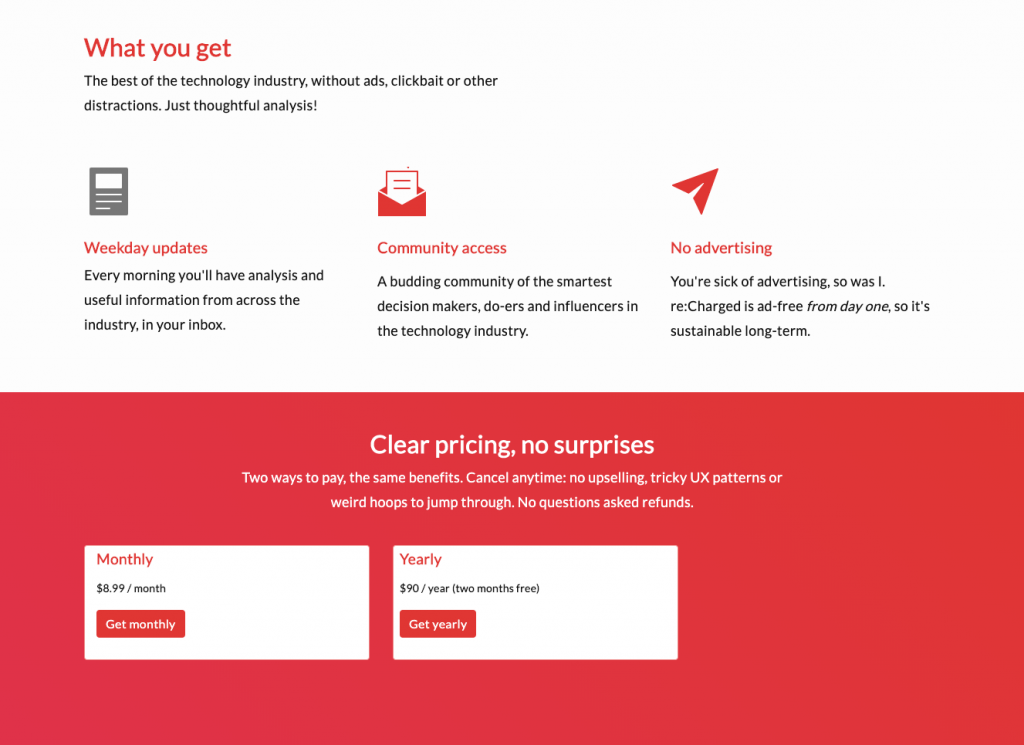
As opposed to just weekly content, subscribers get access to daily updates, a community to engage with, and an ad-free experience.
Exclusive Access
Some publishers aren’t giving away their content for free at all or they’re giving away very little before they ask you to pay for content.
In order to gain ‘exclusive access’ to content, users have to subscribe, but when they do, they’re typically viewing the creme of the crop of that publisher’s content.
For example, The Atlantic readers get 10 free articles a month before being hit with a paywall. In addition, their print subscription is separate from their digital subscription:
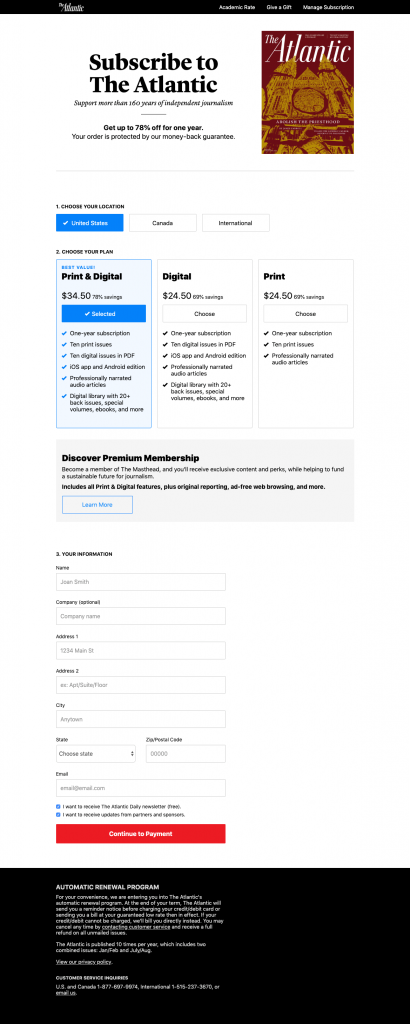
In a similar fashion, some publications are spinning off content channels that you have to subscribe to (albeit, with a free trial) before you can see anything at all.
College Humor’s Dropout.tv is an ad-free, mixed media content experience to which their loyal fans can subscribe for premium content:

Strategy #2: Give Users Personalized Content
When I say personalized, I really mean personalized. These publishers are using strategies to programmatically serve content to users in real-time, depending on what they know that user is interested in, based on their past content consumption habits.
Curated Offerings
Publishers curated, or have algorithms curate for them, content which they know has gotten users to subscribe in the past.
For example Norwegian publisher Aller Media serves users content on the homepage that they think will encourage subscriptions.
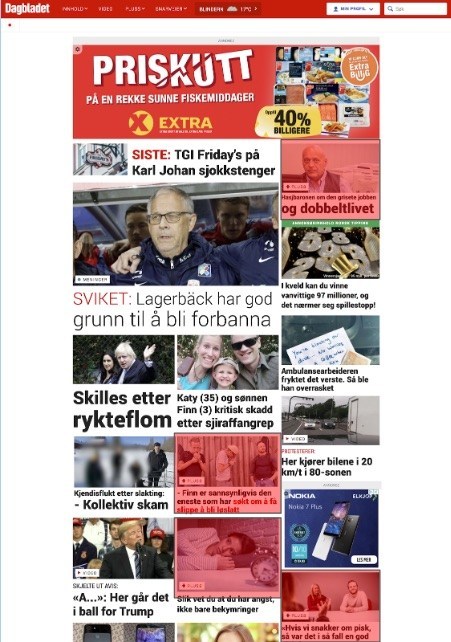
Aller media does this on their own, but many publishers choose to work with outside parties to leverage their algorithms for recirculation of their own organic content.
CBS Interactive works with Taboola to do so and has seen a 31% increase in organic click-through-rate across all properties since implementing our technologies.

Strategy #3: Extended Access to People, Tools and Resources
It’s not just about the content—in order to capture subscribers, some publishers are working with influencers, thought leaders, brands and other partners in order to capture user’s attention.
Partner Services
Usually, the greatest sites attract the greatest thinkers—whether it be on an international, national, industry or niche level. Publications that attract these thinkers are in a position to leverage them for as a perk to being a subscriber.
When you subscribe to WIRED, you not only get access to all of their content, but access to their Backchannel and Ideas section, where users can access long-form journalism and ideas from some of today’s most innovative thinkers.
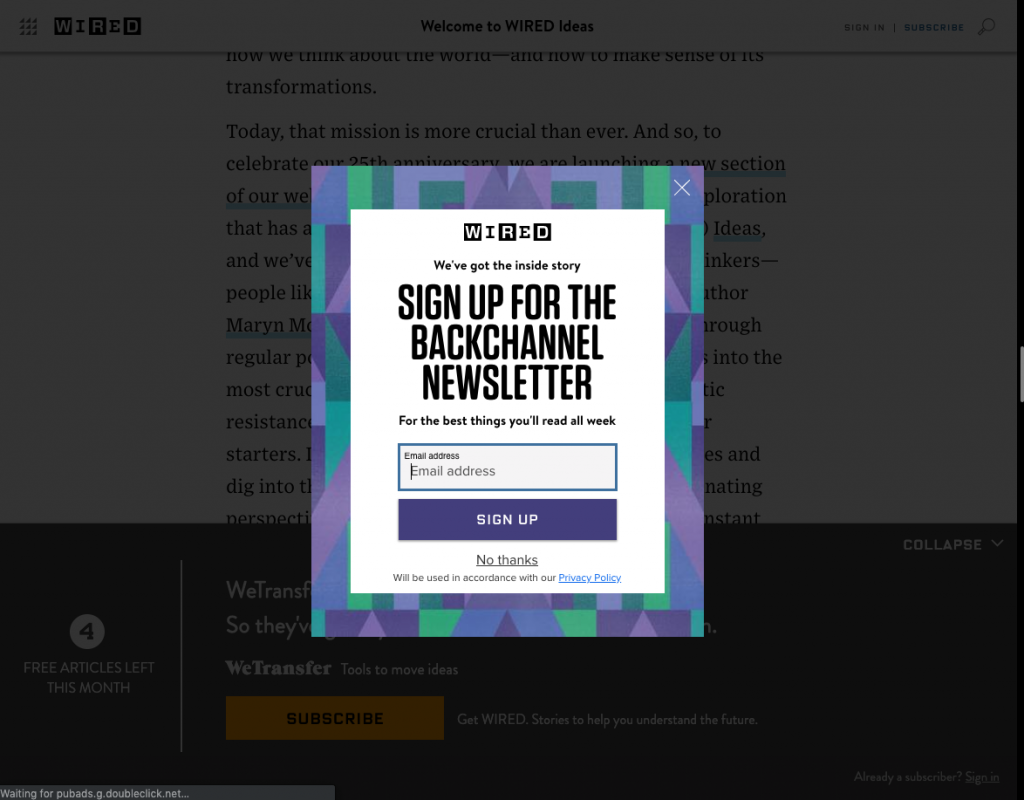
And those connections don’t have to happen through content on-site. The New York Times partnered with Sribd for a bundled subscription deal to help capture more subscribers.
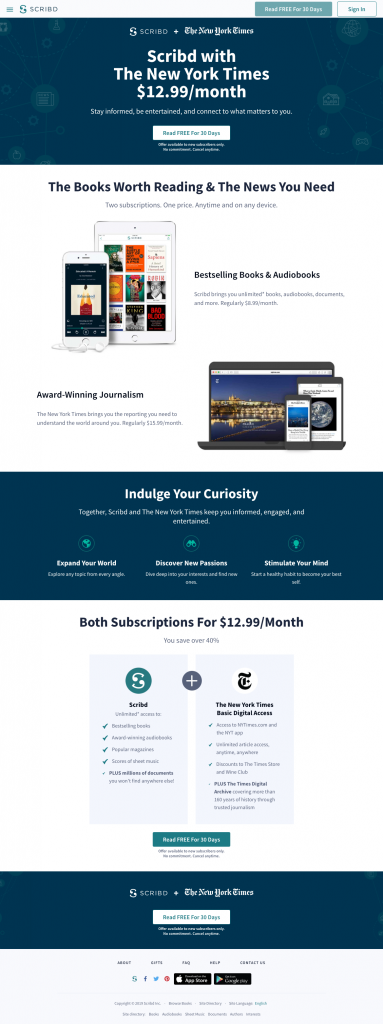
These types of partnerships are becoming more common as they allow publishers access to more consumers for less marketing efforts.
Extended Service
On the flip side, some brands are offering content subscriptions as an extension of the services they already provide.
Best Buy customers can subscribe to Total Tech Support to get support for all of the different types of tech in their homes.

Strategy #4: Get Users Involved
Like I said in the previous section…it’s not just about content. As another point of leverage to capture subscriptions, publishers are strategically introducing subscribers to each other in the form of various types of communities.
Community Connection
Some publications are helping users organize themselves. TheSkimm, a popular daily newsletter targeted toward millennial women, recently organized their readers by created a community called The Skimm Squad to help them promote the release of an upcoming book.
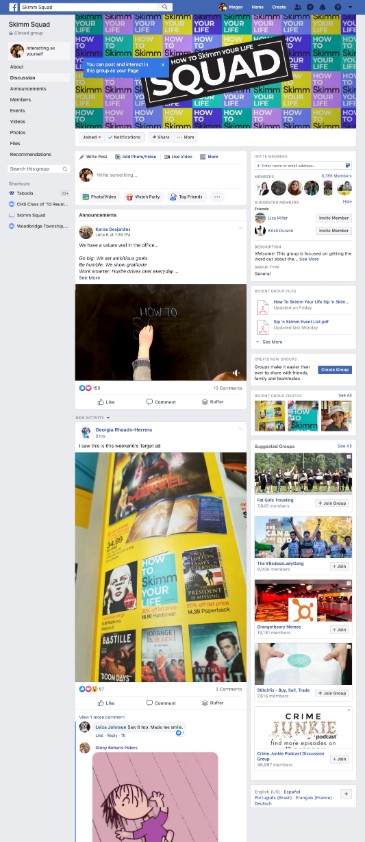
Similarly, Glossy provides subscribers with access to an exclusive Slack channel and member events.

Member Generated Content
What better way to involve your users then to have them help create the content? Quartz gives subscribers access to interviews with CEOs, interactions with journalists, and a sneak peak behind how content is made.
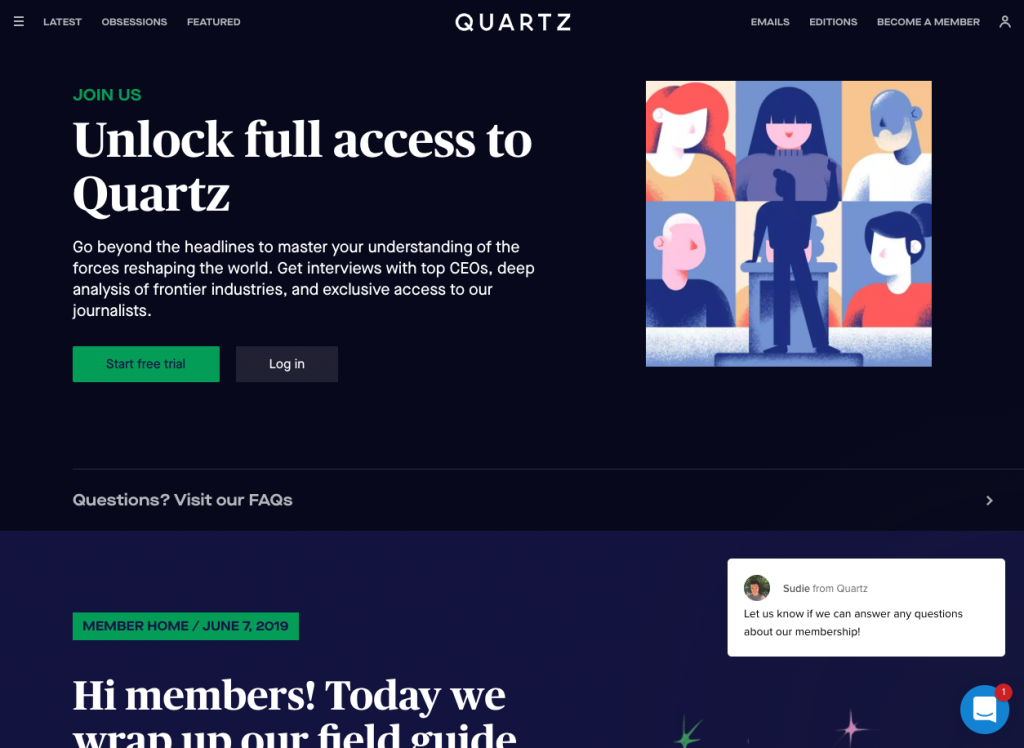
Strategy #5: Ask For Payment, Don’t Demand
Finally, the last paywall strategy isn’t a paywall at all. In fact, it’s probably the most user-friendly, non-disruptive strategy you can have—instead of demanding payment, ask for it.
Crowdsourced Patronage
One of the pioneers of crowdsourcing funds from loyal listeners, readers, viewers, and any other type of content consumption, is Patreon.
Personally, I know that Patreon helps fund several of my favorite podcasts. Here’s the Patreon page for Tanis, a popular sci-fi/horror podcast theatre show. As a patron, I can choose from a variety of monetary rates to donate.
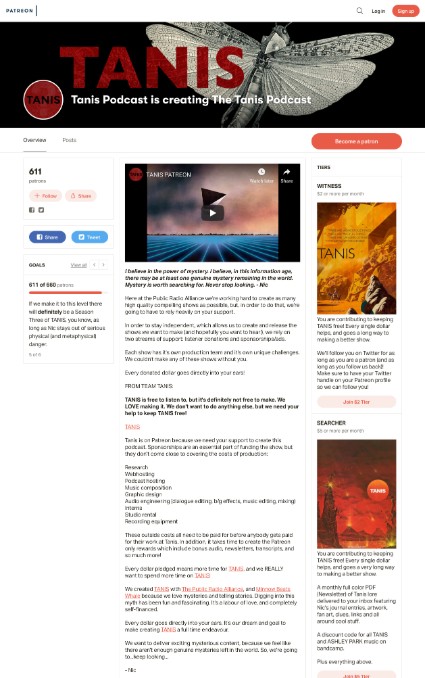
Value Ecosystem
And finally, in order to attract more subscribers, you can give back in the form of discounts, exclusive access and more.
International e-commerce giant Alibaba offers it’s 88 Membership club to offer more members-only brand services, discounts and benefits to subscribers.
Conclusion: there is no one best answer
There are a bunch of paywall strategies out there, but the best one for your publication depends on your users, the amount of data you’re afforded to see from those users, and your ability to leverage it strategically.
In total, we’ve boiled it down to four main overarching strategies:
- Tiers of Access
- Personalized Content
- Partnerships
- User Involvement
- Crowdsourcing
The secret to finding the correct path for you and your content or publication lies with your audience—always keep your audience first.